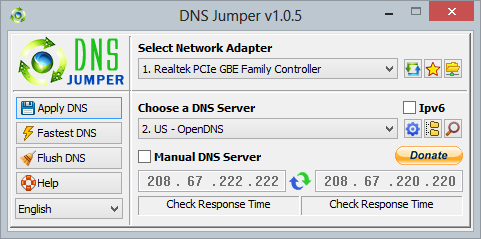Using an alternative DNS service is one of the easy things you can do to increase your internet browsing speed, and provide other security features.
This article is part of our larger series on improving your internet speed – click here to see more articles in the series
One of the principal building blocks of the internet is the Domain Name Server (DNS) system. This is essentially a set of servers based at ISP’s and backbones all over the world that converts the text based website addresses (such as www.chimpytech.com) that are type into a browser into a set of numbers that the internet understands (such as 85.233.160.70).
This is obviously another step in the process of reaching the pages you want from the internet, that if it’s not working correctly, can slow down your surfing experience. Once you type a web address in, the text is sent to the DNS server which converts it to numbers, which are then sent out onto the internet so your browser can display the correct page. Common sense dictates that if your DNS provider is running slow then your surfing will be slow.
Most people just use the default DNS provider that comes pre-configured in either their router, which if they got the router from their ISP will probably be their own, or one that is set in Windows as this one will be used in deference to the one in the router.
Using an alternative DNS setting in your router can be a messy job, and nearly every model does it differently so it’s out of the scope of this article, and some ISP’s actually lock you out of the DNS setting if you get the router from them.
Changing the DNS settings in Windows whilst not being exactly difficult is a little laborious, and there are a lot of steps involved, and if you want to change back to the original settings, or to another alternative DNS provider it can become pretty laborious.
One good solution to this is to use a program call DNS Jumper, that will easily re-configure the alternative DNS settings in Windows on the fly as often as you like.
DNS Jumper is available from the authors page here but the correct download button is a little difficult to spot amongst a few advertising buttons so use this link to get the file.
You will download a zip file that doesn’t need to be installed which means that it is totally portable, and can be used from a USB stick as part of a diagnostic toolkit.
Simply double click the .exe file included in the Zip file to run DNS Jumper and find yourself a faster alternative DNS – complete instructions are available on the authors website so we won’t repeat them here.

